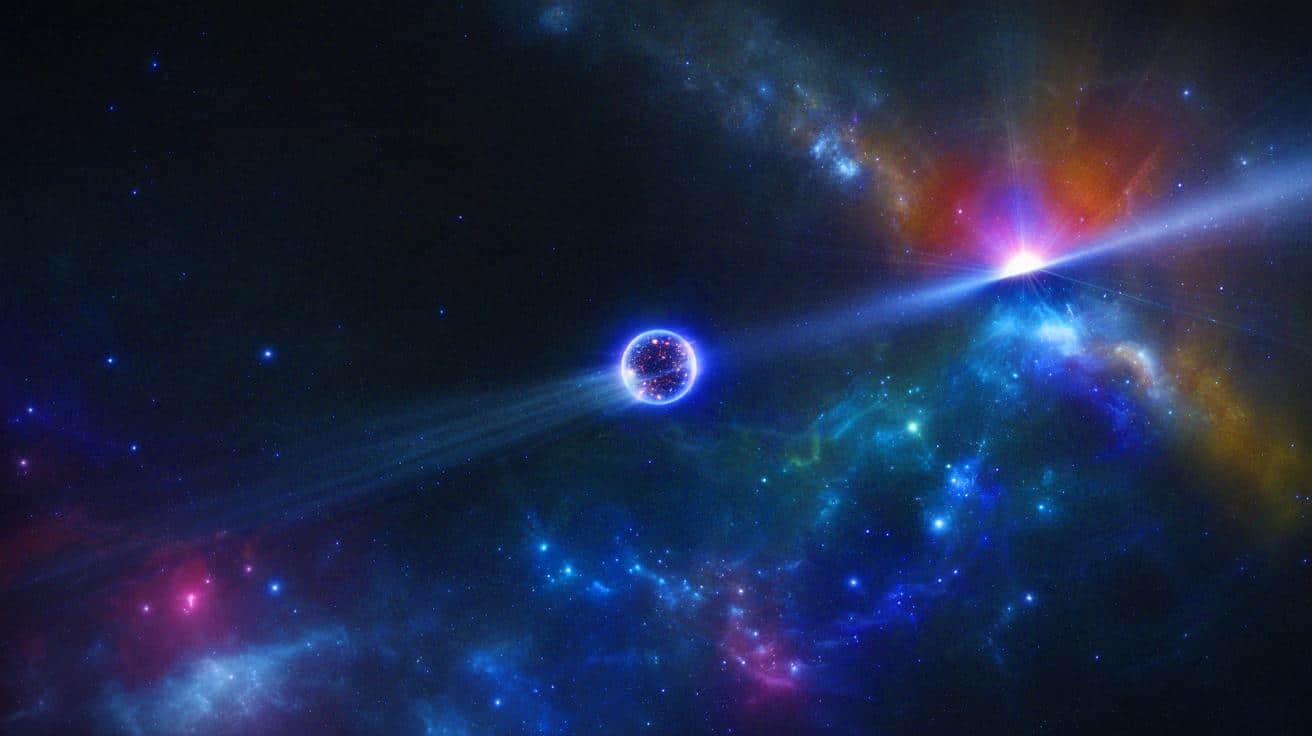IN A NUTSHELL
🔬 Scientists detect an extraordinarily energetic neutrino, potentially linking it to primordial black holes.
🌌 The discovery could provide the first direct evidence of Hawking radiation and support decades-old theories.
🧩 Researchers suggest a connection between dark matter and primordial black holes through this event.
📚 This finding bridges quantum mechanics and relativity, advancing the quest for a unified theory.
In February 2023, the scientific community was abuzz with the detection of an extraordinarily energetic neutrino, designated as KM3-230213A. Detected at a staggering 220 petaelectronvolts, this neutrino far surpasses previous records and has sparked significant intrigue across the globe. Scientists are now investigating whether this unprecedented event could provide the first direct evidence of a theoretical concept predicted decades ago by Stephen Hawking. The implications of such a discovery are profound, potentially confirming that even the most massive objects in the universe adhere to the principles of quantum mechanics and offering new insights into the mysterious nature of dark matter.
The Origin of KM3-230213A
Neutrinos, among the most abundant particles in the universe, are typically produced during high-energy astronomical events like nuclear fusion in stars or supernova explosions. Despite their prevalence, detecting neutrinos is a rare occurrence because they possess no electric charge and have negligible mass, allowing them to pass through matter largely unnoticed. The detection of KM3-230213A was remarkable not only because of its rarity but also due to its immense energy, which dwarfed previous records.
This extraordinary energy level prompted scientists to speculate about its origin. While active galactic nuclei are often considered likely sources of high-energy neutrinos, the magnitude of KM3-230213A’s energy led researchers to explore more unconventional explanations. Physicists Alexandra P. Klipfel and David I. Kaiser from MIT proposed that this neutrino might be the dying breath of a primordial black hole, emitting a burst of Hawking radiation in its final nanoseconds.
Understanding Primordial Black Holes
Primordial black holes are hypothesized to have formed during the universe’s infancy, shortly after the Big Bang. Unlike their stellar counterparts, which originate from the collapse of massive stars, these black holes are believed to have resulted from microscopic fluctuations in spacetime, magnified by cosmic expansion. Their mass is considerably smaller, comparable to that of a small mountain or asteroid.
According to Stephen Hawking’s theories, the quantum vacuum around a black hole is never truly empty. Pairs of virtual particles constantly appear and annihilate each other. However, if this phenomenon occurs near a black hole’s event horizon, one particle may be captured while the other escapes, resulting in Hawking radiation. This energy loss causes the black hole’s mass to decrease over time, leading to an explosive disappearance in its final moments.
The Significance of Hawking Radiation
Klipfel and Kaiser’s calculations suggest that a dying primordial black hole could produce up to one sextillion neutrinos in a nanosecond—exactly the kind of particle flood that could have generated KM3-230213A. For such an energetic neutrino to reach Earth, the explosion would need to occur relatively close, within about 186 million miles (299.2 million kilometers), placing the event within the Oort Cloud at the solar system’s boundary.
Despite the low probability of this scenario—estimated at approximately 8%—the absence of alternative explanations makes it a compelling hypothesis. If confirmed, KM3-230213A would validate Hawking’s equations and bring us closer to unifying the worlds of general relativity and quantum mechanics. This breakthrough would represent a significant step toward a comprehensive theory that explains both galactic behaviors and the properties of elementary particles.
The Quest for Dark Matter
Beyond its implications for black hole physics, the discovery of KM3-230213A could offer insights into the elusive nature of dark matter. Physicists have long speculated that primordial black holes might constitute a significant portion of dark matter, which remains one of the greatest mysteries in astrophysics. If these black holes indeed emit Hawking radiation, they could provide a crucial link between the macroscopic and microscopic realms.
This discovery would also be a triumph for a lineage of visionary thinkers like Albert Einstein, Paul Dirac, and Stephen Hawking, who foresaw the potential of black holes as a key to unifying physics’ fundamental laws. Such a breakthrough could pave the way for future explorations into the universe’s most profound questions.
The detection of KM3-230213A marks a pivotal moment in our understanding of the universe, offering potential evidence for phenomena first theorized over half a century ago. As researchers continue to investigate the origins and implications of this event, they embark on a journey that could reshape our comprehension of the cosmos. How might this discovery influence our quest to understand the fundamental forces governing the universe, and what other mysteries await unraveling in the vast expanse of space?
This article is based on verified sources and supported by editorial technologies.
Did you like it? 4.4/5 (27)

